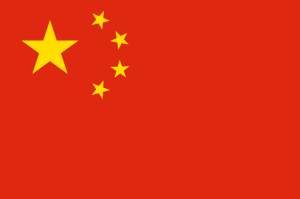McDull (1988), or Mak Dau (麥兜) as he is called in Cantonese, is a cartoon character from Hong Kong, a boy pig with a brown round patch over his right eye. In China his films can stand their own against the likes of Harry Potter.
America has Mickey Mouse, Japan has Hello Kitty and Hong Kong has McDull.
McDull does not have beauty, brains, wealth or even good luck. He is slow and fat. His father has disappeared and his mother is bringing him up on her own in some poor part of Hong Kong that is dirty and falling apart. She is stern and expects too much of him. Yet he has a big heart and big dreams.When one thing fails, he tries another,never giving up, never losing heart. His hero is Lee Lai-Shan, the only person from Hong Kong ever to win an Olympic gold medal. McDull’s head may be in the clouds but his heart is in the right place – even if his bowels are always getting him into trouble!
His stories are heartwarming, somewhat sad but full of laughs – even if you do not get the tongue-in-cheek satire on Hong Kong life and the play on Cantonese slang. The stories show a deep, bittersweet love for Hong Kong. Told through the eyes of a boy, they have the wisdom of years.
Unlike Disney, nothing is cleaned up and made to seem better than it is; no smiley face is pasted over life’s troubles. Its sense of the world is urban whereas Disney’s is suburban.
McDull is the creation of artist Alice Mak and writer Brian Tse. McDull started out as a character in the comic books of his distant cousin, McMug. By the 1990s he had his own comic books. In the 2000s he had his own films.
The first film was “My Life as McDull” (2001). The fourth and latest one came out just last summer, “McDull Kungfu Kindergarten” (2009). The films mix together drawings with computer animation and live action shots.
McDull’s teacher is Ms Chan. She looks like a white woman with wavy brown hair but acts like she is Chinese. The same with the school’s headmaster. Even strangers in the streets of Hong Kong look like them. Curious.
One night McDull makes a little man named Excreman out of his dung (there is quite a bit of bathroom humour in these stories). He gives him a scarf of toilet paper and a small cup for a hat. Together in the middle of the night they go to Dung World. There Excreman tells him of his dream of helping flowers to grow. Before he brings McDull back to his room he says:
Remember us whenever you see the humblest, the deserted and the despised.
I found out about McDull while reading about Lou Jing, the half-black singer from Shanghai. People called her “Stupid” when she was growing up. She said that McDull would tell them that she is not stupid but kind.
See also:







